The 5 Best Note Taking Apps for Android
A smartphone records audio, takes pictures, stores scribbled notes, manages lists and personal information, and all this information can be shared by a user in a myriad of ways. Since there are so many ways to store information, it was only logical that all be combined to create a fully functional note taking app. Note taking apps can help optimize your life, get things done, remember important information, act as a quick scratch pad, and are generally home to random bits of information we need to keep on hand. There’s no shortage of note taking app for Android but they’re not all built the same. These are the 5 best note taking apps for Android we found.
These apps were tested on a Samsung Galaxy S8. The apps were tested for design, ease-of-use, functionality and how quickly we could create and retrieve notes. Only 5 apps were selected because of what they individually brought to the table. We recognize that there are numerous great apps out there, our list is focused on apps that are doing it better than the rest.
Evernote
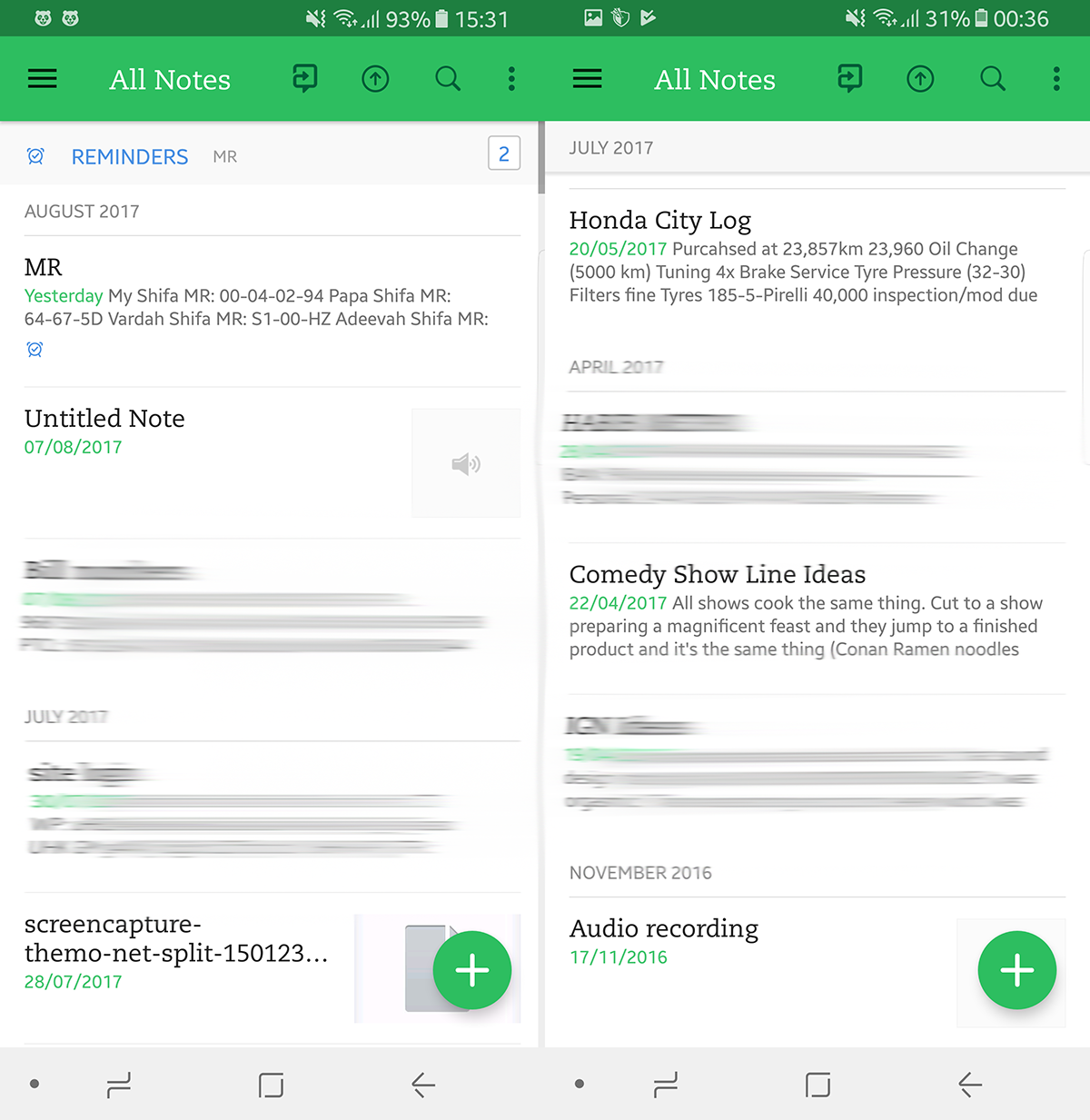
Evernote is to note taking what Google is to search engines. It has defined the genre and set the benchmarks for what a note-taking app should do. You can create lists (simple text, numbered list, or checklists), voice memos, image memos, and markup images and PDFs and share them with a team/individual or keep track for yourself. You can color code your lists, or tag them with custom labels. It makes for a very pleasant as well as efficient note taking experience. You can also collaborate with others on notes and chat while working on things.
The widget makes note taking and management even easier in that you have immediate access to your shopping lists, or your task lists. On top of that, you can also include reminders that trigger certain notes. It is an entire note taking eco-system.
Google Keep
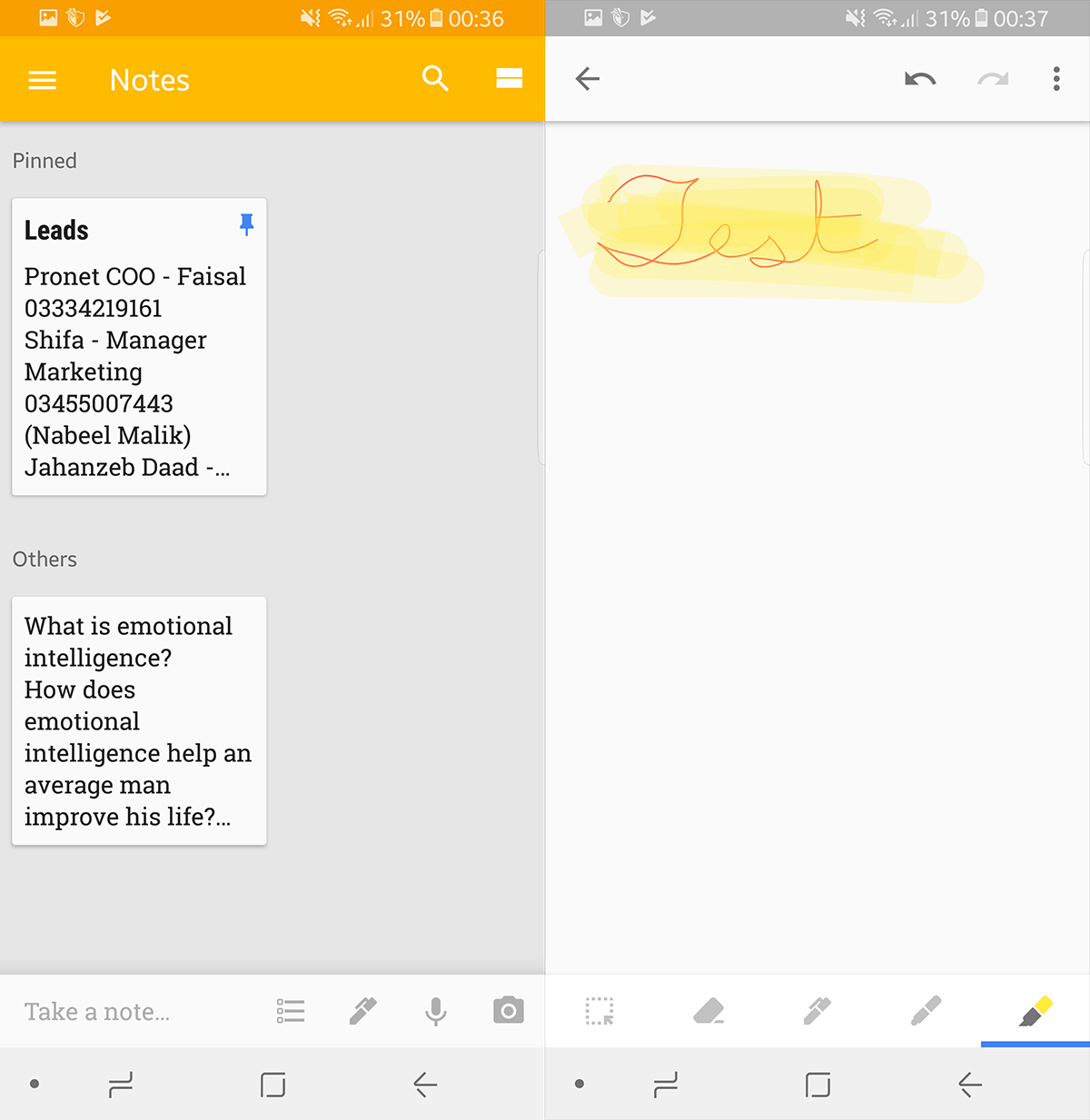
Google Keep ships with Android devices so almost every has it. Just because it’s a stock app doesn’t mean it lacks in features. On the contrary, it is one of the most popular note taking apps on Android. Powered by the material design, it uses color coded spaces to organize your notes. It looks great and is very functional. Every note you add becomes a card you can quickly scroll through. The Keep app integrates with Google Drive so your access will be universal across devices. You can even add voice, make to-do lists, set reminders and share notes with other people. Most importantly, it has android wear support as well. Google Keep usually ships with all Android devices by default, but can also be downloaded separately, if needed.
Microsoft OneNote
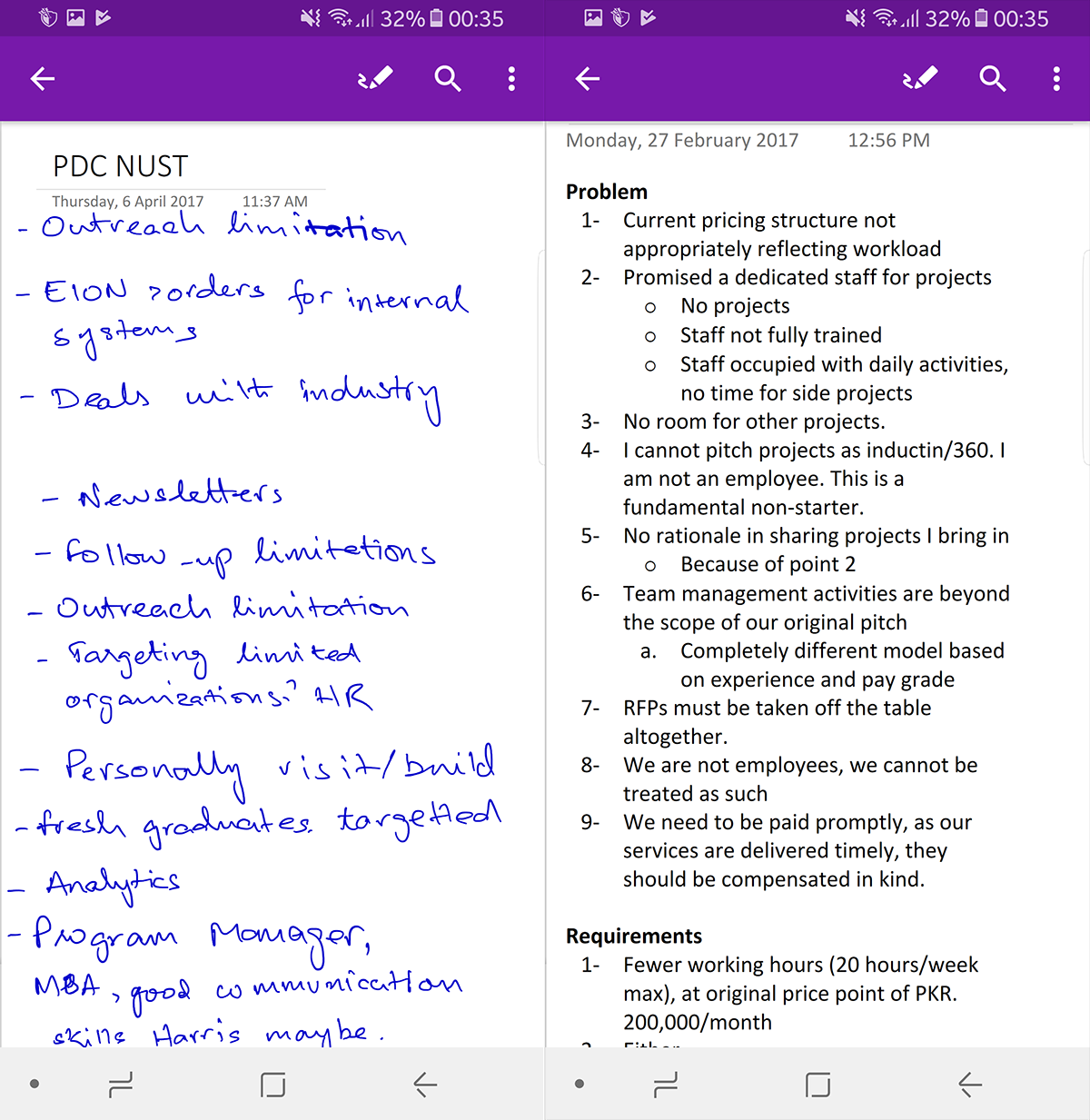
Microsoft OneNote is Microsoft’s contribution to the note taking apps niche. It integrates with OneDrive the same way Google Keep integrates with Google Drive. Much like Evernote and Google Keep, it supports multimedia content as well as regular notes. You can even enter handwritten notes (best done with a stylus or smart pen) with varying line space sizes and ink preferences. Though OneNote is free on almost every platform, there is also a paid version that ships with an order of Office 365 that is a little more feature rich, but that is no reflection on the performance of the Android app. Speaking of Microsoft Office, OneNote integrates very well with the entire Microsoft eco-system. Thought it is a little bloated, it’s not big enough to bog down a new phone by any measure. With a simple configuration, you can even import notes from OneNote to Evernote.
S Note
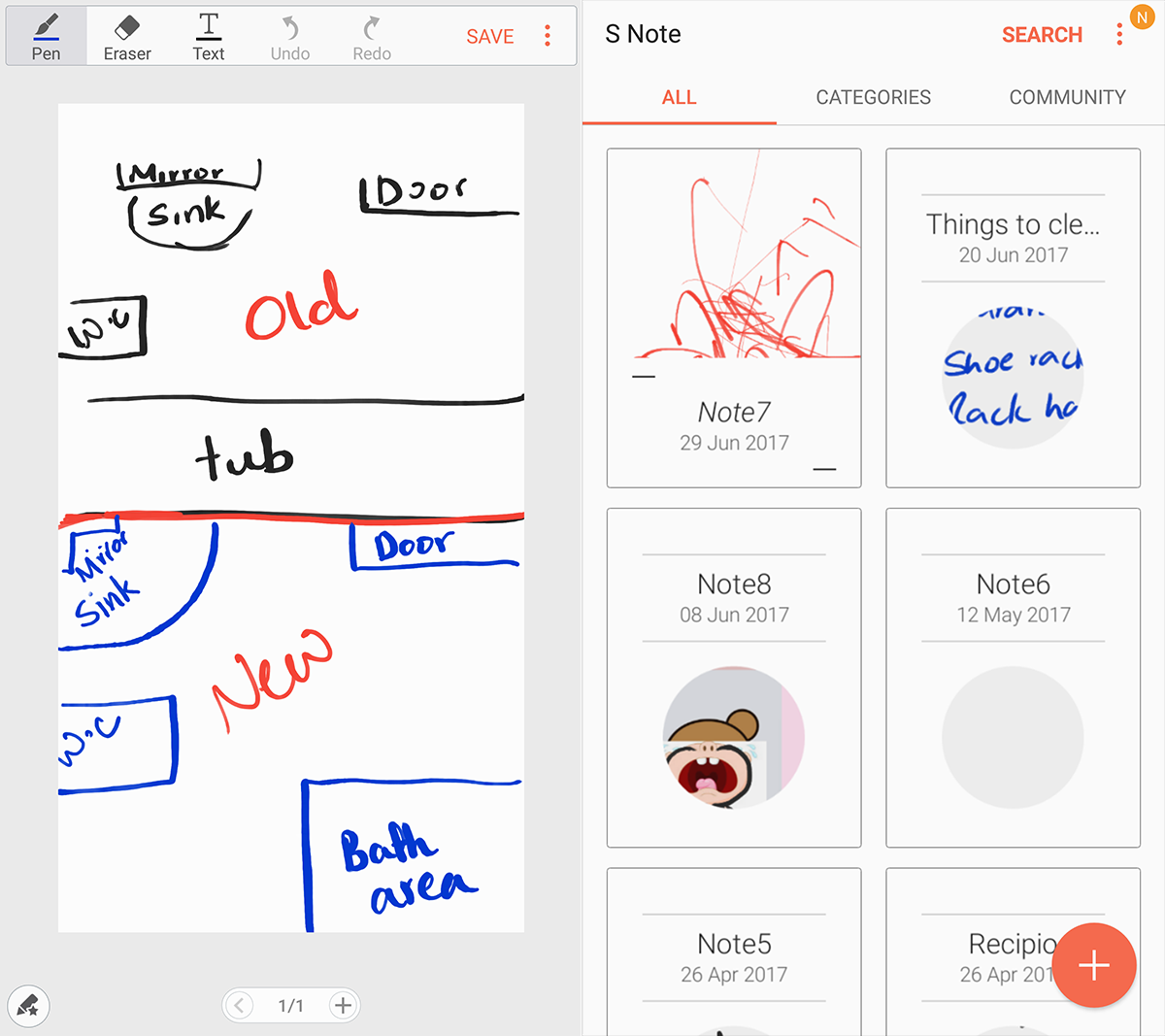
Samsung has two note taking apps listed on the Play Store, S Note and Samsung Notes. We are going to talk about the former. S Note is made for Samsung’s Galaxy Note series of devices, so it is very S-Pen friendly. However, that does not preclude touch based and regular text based input. Each new note is stored as a notebook, and each notebook has numerous pages you can write on. That way you can have a notebook for grocery items, one for a to-do list, one for audio, one for photos (which you can annotate) and videos. You can share notes with other S-Notes users and you can export notes as images if/when needed. S Note, admittedly, is not as flexible as some of the other entries here, but it is a little simpler to use than the average app.
Omni Notes
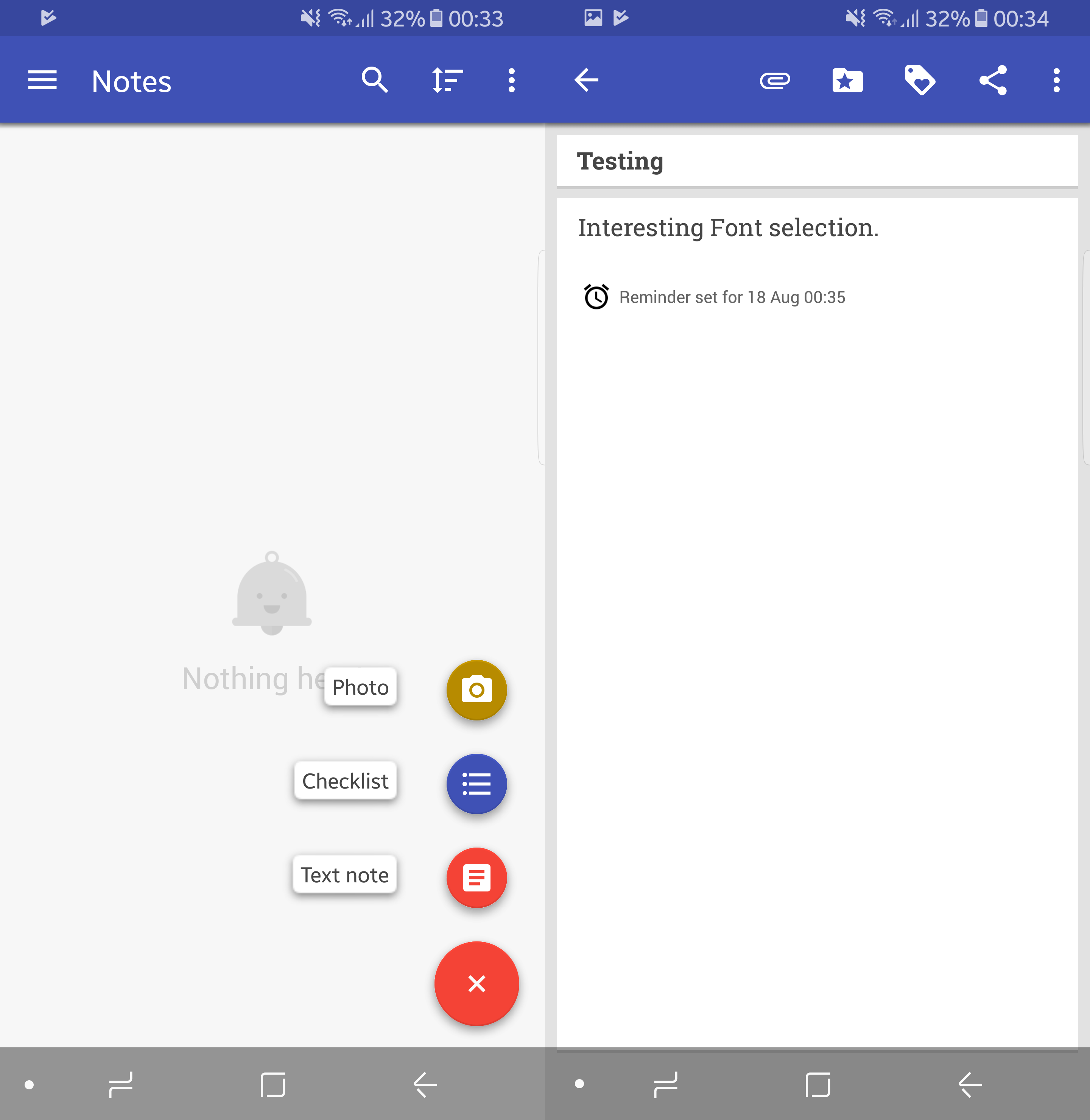
Omni Notes, not to be confused from the series of solutions from the OMNI eco-system for macOS, is one of the comparatively less popular but highly capable apps in this list. With the open-source Omni Notes, you can share and merge notes, organize them using tags and categories, create to-do lists and sketches, export/import notes to backup Image, and add audio and generic file attachments. It integrates well with Google Now as well. You say “write a note” and dictate text to Omni Notes. It also supports varying types of widgets, integration with DashClock and compatibility with lockscreens (android 4.2+).

so you pick big corporate apps with undesirable permissions. there are far better independent note taking apps with minimal permissions, article lists zero. speaks for itself doesn’t it.
Omni Notes is not a big corporate app, it’s an open source project.